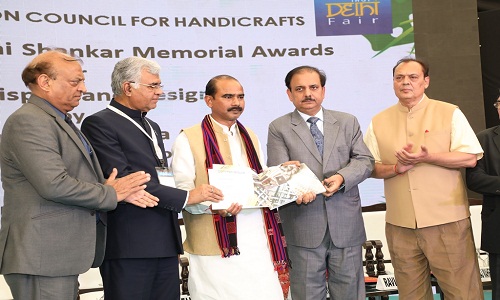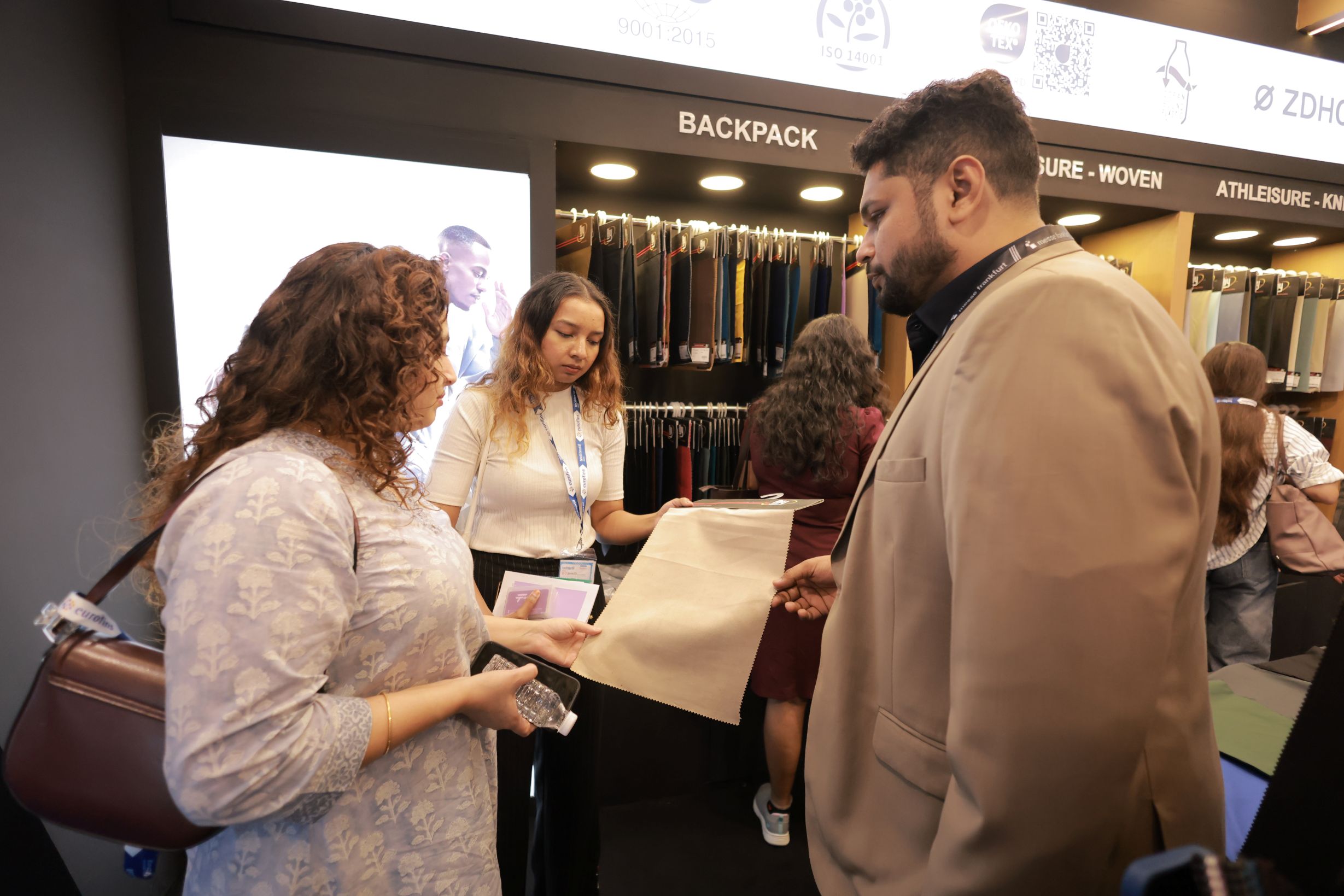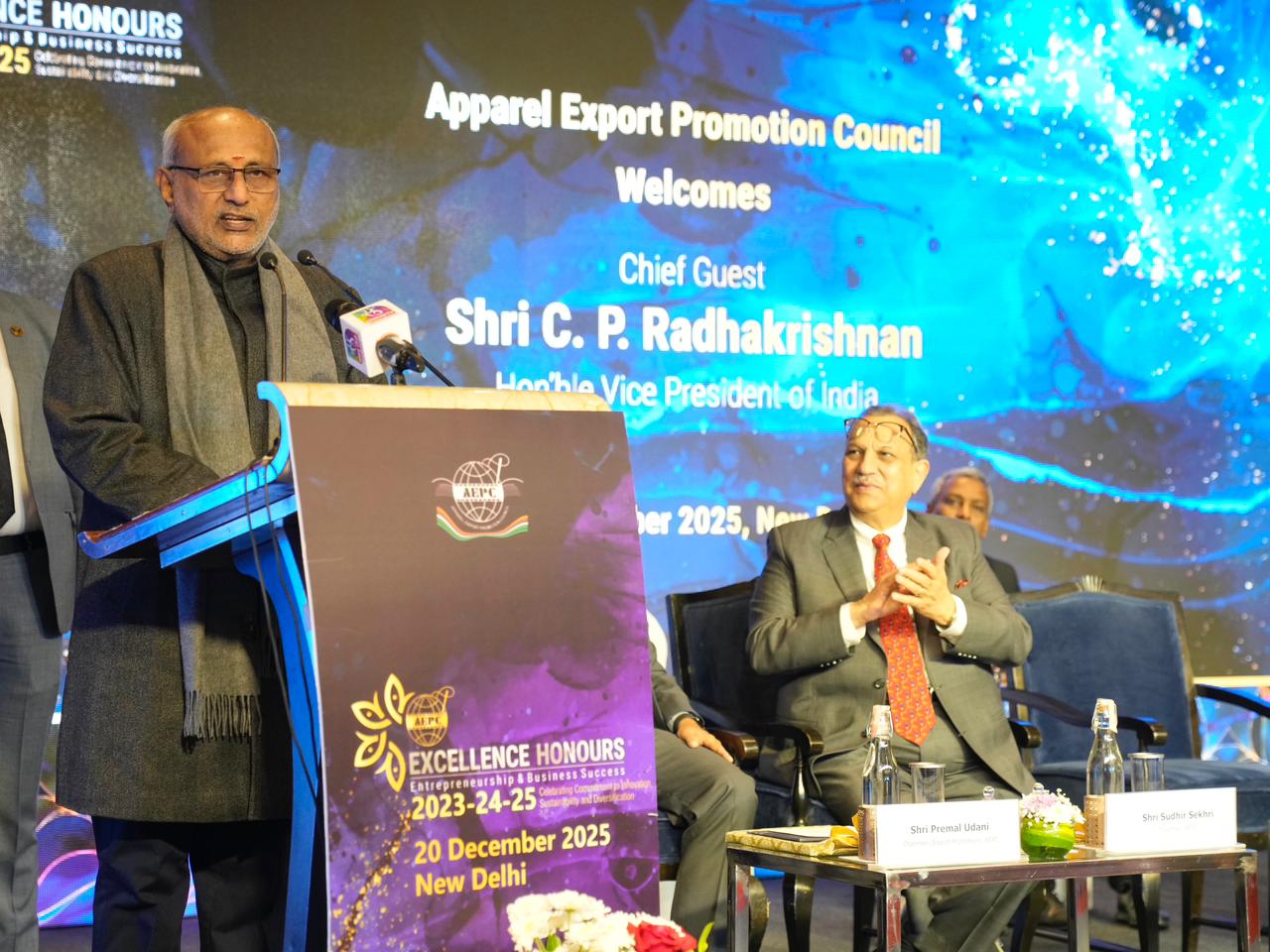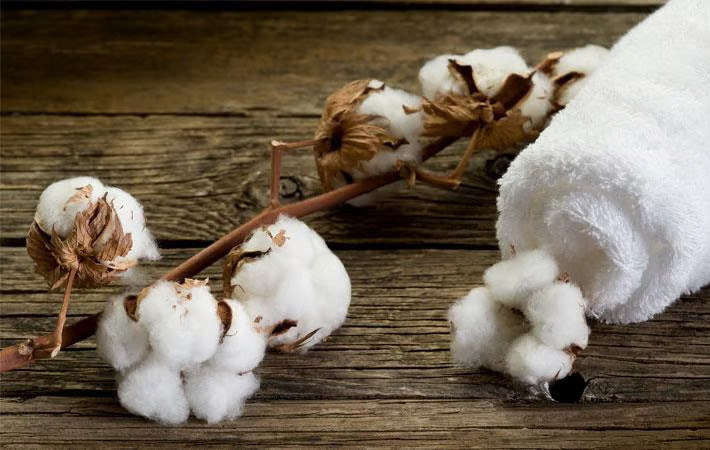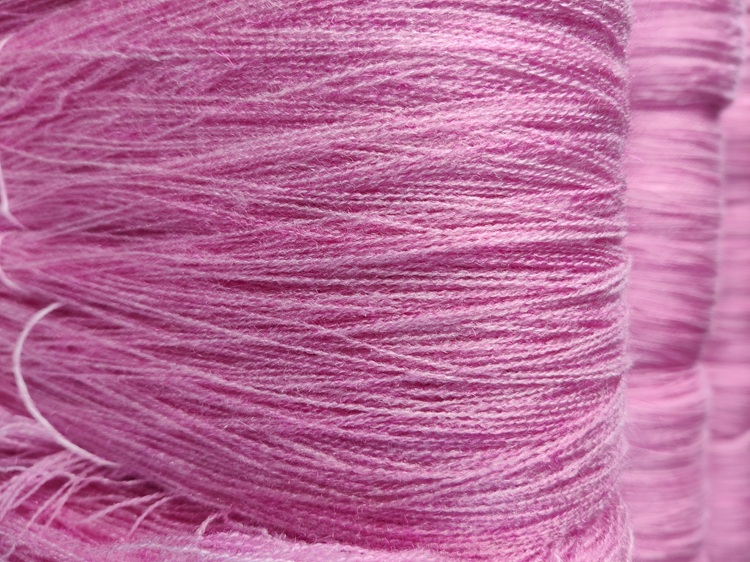FW
Lectra, the technological partner for companies using fabrics and leather, the French business school ESCP Europe and their joint ‘Fashion & Technology’ Chair explored the impact of Industry 4.0 on fashion’s value chain at a recent round table discussion at ESCP Europe’s London campus. From brands to manufacturers panellists from across the value chain stressed on the need for the industry to embrace alliance between man and machines to leverage enormous benefits from quicker decision-making to cost-reduction.
Exploring the advantages of Industry 4.0 technology, Evelthon Vassilou, CEO, Alison Hayes UK, disclosed, “Interpreting the data of what is and isn’t, selling should help to speed up decisions. You can react very quickly across the entire supply chain and either stop producing something unsuccessful or ramp up production if successful. Data and data analytics is not sufficient, to succeed this also requires a high degree of trust and integration between retailers and suppliers.”
Robert Diamond Founder and CEO, Fernbrook Partners said, “It’s about using technology to deliver continuous improvement in everyday business. People are not good at making a large volume of repeatable decisions with many different data inputs. If business decision, or the outcome of the resolution tomorrow, is pretty much the same as what happened yesterday, then there is a chance for machine learning to help improve the situation.”
Pierre Mercier, Senior Partner and MD, Boston Consulting Group noted that technology propelled by Industry 4.0 is disrupting former sources of competitive advantage, “forcing companies to rethink how they want to compete in their respective industries and how to use data to compete differently. The common denominator in the fashion ecosystem is that everyone is facing the opportunity for a step change and need to figure out where to double down and accelerate their transformation.”
UK fashion brand’s AllSaints, Dan Hartley, Global Head of Digital Commerce, shared his trade secrets, “We take customer feedback very seriously and we use it as a framework for our internal road map - from a tech and development point of view, through to design and fit, the customer is at the heart of everything we do.”
Guess will trace the sources of its wood-based fabrics like viscose, rayon and modal fibers. This is a bid to battle deforestation and protect the rights of people living in at-risk forests. Guess joins an array of fashion companies aiming to rid their supply chains of products from endangered forests.
The brand aims at embracing existing solutions as well as trying new ones to address social and environmental challenges. It’s taking the steps necessary to improve its supply chain. By 2020, it aims at making its global operations greener and encouraging consumers to buy more eco-conscious garments. This year Guess mapped its denim production by water availability and assessed the sustainability of its denim products. To improve its denim production and products, the company is currently drafting a comprehensive water action management plan to address these impacts, which is set to debut in 2018.
Production of wood pulp for fabrics can involve clearing forests to build eucalyptus plantations on land traditionally used by indigenous communities. Other companies to take similar measures include Abercrombie & Fitch, Ralph Lauren, L Brands, H&M, Zara, Levi Strauss and British fashion designer Stella McCartney.
Guess’s policy is another critical step in an industry-wide shift to take responsibility for the on-the-ground impacts of rayon and viscose fabrics. Wood-based rayon, sometimes called the poor man’s silk, is inexpensive and flexible, contributing to its popularity with clothing makers.
Since its conception in 1989, G-Star RAW a cult leader in the denim has continuously challenged the conventions of design. Staying true to its ethos, the brand has launched the world’s most sustainable denim after two years of production. The denim brand has made available to the public one of their most ambitious projects to date—the most sustainable jeans ever. After years of analyzing every facet of the denim production chain, G-Star has developed techniques and technologies that significantly reduce, if not eliminate in some aspects, the environmental impact of creating a pair of jeans.
G-Star’s commitment to sustainability is keenly reflected in their newly developed material which demonstrates four unique denim innovations.
From new, sustainable washing techniques to the creation of the cleanest indigo dyes in the business, this denim is an innovation that has the potential to usher in a new era of environmentally-conscious denim production across the entire industry.
G-Star have also made the material open source, meaning other denim manufacturers can access and use the material in their production an incredibly important move for the future of sustainable denim.
Gap has suffered from a decline in store traffic. The company will instead focus on areas where customers are actually shopping - off-price locations and online. Gap was able to deliver positive comps for the first time in 15 quarters.
Gap intends to focus on growth brands, such as Hollister and Athleta, while closing down about 10 per cent of Gap and Banana Republic stores from lower-productivity locations. This move follows from the decline in demand for the company's more established brands in favor of its younger chains.
The US active wear market is a $40 billion behemoth, with an eight per cent average annual growth rate, representing one of the highest growth areas in the apparel market. Gap’s Athleta brand is solely focused on this space and the company provides athletic wear in its other segments as well. For the company as a whole, this segment contributes over a billion dollars in revenues, while Athleta’s growth continues to outpace the market. The company has taken a number of initiatives to make the supply chain responsive, and as a result, 50 per cent of the assortment in the business is on a pipeline of 6 to 11 weeks.
Indian Handicrafts and Gifts Fair (IHGF) was held in New Delhi, February 23 to 27, 2018.
More than 500 buyers from 111 countries and domestic volume retail buyers visited the show to source home, lifestyle, fashion and textile products during the five day extravaganza.
Major Indian retail/online brands Amazon, Furniture Walla, Pepperfry, Good Earth, Archies, Fabindia, Flipkart, Accenture, H&M visited the show and placed orders. This became one of the motivating factors for those exhibitors who had shown their interest for retail sale during the show.
The Ajay Shankar memorial awards for the best design and display stand in the category of houseware, table, kitchen and hotelware, fashion jewelry and accessories, furniture hardware and home accessories, home textiles, furnishing and floor coverings, lamp lighting and accessories and decorative and festive décor were distributed. In each category gold, silver and bronze trophies were given.
The fair is held twice a year. Theme pavilions of NER, Jodhpur and J&K remained one of the highlights of the fair as exquisite crafts of these states attracted many buyers to visit these theme pavilions. The fair has become a major marketing platform to boost exports of small and medium entrepreneurs of the handicraft sector.
Maximum buyers were from the US, UK, Germany, Japan, Australia, France and China.
Handicraft exports during 1994-95 when the fair initiated were Rs 3159 crores and reached Rs 24,000 crores in 2016-17.
The 45th edition of IHGF – Delhi Fair Spring 2018, being organised in India Expo Mart, Greater Noida to woo buyers from around the world with huge collection of 2000 handicrafts products across 14 product categories including house ware, home furnishing, furniture, gifts and decorative, lamp and lighting, Christmas and festive décor, fashion jewellery and accessories, spa and wellness, carpets and rugs, bathrooms accessories, garden accessories, educational toys and games, hand-made paper products and stationery and leather bags manufactured by Indian exhibitors.
Several seminars were conducted during the event where experts from different fields and subjects were invited to upgrade the knowledge of the participating exhibitors.
One of the most important seminar held on 4th day of the event was on Trends and Forecast of Autumn/Winter and Spring/Summer 2019 where P. J. Arandor, Fillipino International Lifestyle Designer advised participating companies to manufacture their products as per upcoming trends during Autumn/Winter and Spring/Summer 2019 so that that attention of buyers can be gained in forthcoming International and domestic fairs.
The seminar focused on tendencies for the coming season in key colours, core directions, essential moods, relevant materials, dominant patterns and significant images for 2019, said Rakesh Kumar, ED – EPCH.
Kumar further elaborated that the fair also provides an opportunity to exhibiters to promote their products through the fashion shows.
On 4th day, the fashion show showcased jewellery, fashion accessories and artisanal apparel provided by exhibitors such Handicraft and Handloom of Odisa, R.Co. Arts Emporium, Maharaja Crafts, Kohli Overseas Trading Co. and M. A. Internationals.
VF Corporation is changing to a circular business model. Consumers come back with lightly used jackets, shoes, clothes, to get of incentive to purchase something new. VF takes these products and, through a third party, cleans, resells, and recycles them. The company has found every time a retail store has such a program, traffic in the store goes up, conversion rate goes up, and average retail sale goes up.
US-based VF Corp, is an apparel, footwear, and accessory company and has more than 1,500 owned and operated retail locations around the world across its brand portfolio. A look at the overall impact of any company within the apparel industry shows roughly 70 or 80 per cent, if not more, comes from materials. The apparel industry is also incredibly wasteful, driven by a lot of fast fashion.
One challenge is that the economic system is not based on taking products back from consumers. There is not a lot of infrastructure. Consumers are not familiar with the idea of putting clothes into a box to send back to a brand. Who does it go back to? Distribution centers aren’t set up to take products back, wash them, clean them, repair them, and put them on an e-commerce site to sell them again.
Under the ASEAN-Australia-New Zealand Free Trade Agreement (AANZFTA) roadmap, Australia will cut 90 per cent of import tariff lines in 2018 and 100 per cent of them in 2020. Pham Tuan Anh, Deputy Head of the Ministry of Finance’s Department of International Cooperation, says this is a good opportunity for Vietnamese businesses to promote the export of goods to the Australian market when those import tariff lines reduce to zero per cent.
Under AANZFTA Vietnam has had many advantages in exporting agricultural products, consumer goods, textiles, footwear and wood products to Australia and are eligible for tariff preferences. Australia is a potential export market for Vietnamese goods, especially seafood as its consumption in that country has increased rapidly to some one million tonne per year.
At present, Vietnamese enterprises do not have professional knowledge of the retail system, including measures on approaching the system as well as regulations on food hygiene and safety and technical standards. They have forgotten how to introduce and advertise Vietnamese products in supermarkets. To provide the necessary information about the Australian distribution system to Vietnamese companies, the Vietnam Trade Office in Australia has introduced to local businesses the list of large retail groups in Australia with an annual revenue of AU$1 billion (US$782 million) and their basic activities to help them market their products directly to the Australian distribution chain.
It is seen that the trade value between Vietnam and Australia is increasing by an average of 5 per cent every year. The General Department of Customs mentioned that in 2017, the bilateral trade value between Vietnam and Australia reached more than 6.46 billion USD, a year-on-year growth of 22.9 per cent.
For Coats’ revenue for 2017 grew by four per cent, driven by apparel and footwear (up five per cent) and Performance Materials (up 12 per cent). Adjusted operating profit was up 11 per cent. Group operating margin was up 11.5 per cent. UK-based Coats, is an industrial thread manufacturer. Coats delivered a strong performance in 2017. The momentum continued throughout the year in key apparel and footwear markets, where it continued to take share, and it saw double-digit growth in hi-tech end-uses in Performance Materials.
In an environment of rising input costs, Coats was able to grow its operating margins, through realising price increases, productivity and procurement gains, as well as tight control of its cost base. Adjusted EPS was up 30 per cent as a result of higher operating profits, a further reduction in the effective tax rate and a reduction in finance costs.
Adjusted free cash flow growth was up 12 per cent. Following the strong performance in 2017 the company has announced a full year dividend per share, which represents a 15 per cent year-on-year increase. As such, 2018 adjusted operating profits are expected to be slightly ahead of previous expectations. Coats will also continue to focus on cash flow generation.
Sri Lanka’s earnings from garment exports to the EU increased 27.2 per cent year-on-year in December 2017. Garment exports to the US and other non-traditional markets increased by 18 per cent and 14.1 per cent, respectively, during December 2017. The increased exports to the European Union followed restoration of GSP Plus facility in May 2017.
The leading markets for merchandise exports from Sri Lanka in 2017 were: the US, the UK, India, Germany and Italy, accounting for about 50 per cent of total exports. Due to the combined effect of higher volumes and prices of bunker and aviation fuel, export earnings of petroleum products increased significantly in December 2017. Earnings from rubber products increased during the month mainly due to the export of tires. Earnings from exports surpassed a billion dollars in December 2017 for the fifth time during the year and recorded a double-digit growth year-on-year for the sixth consecutive month.


